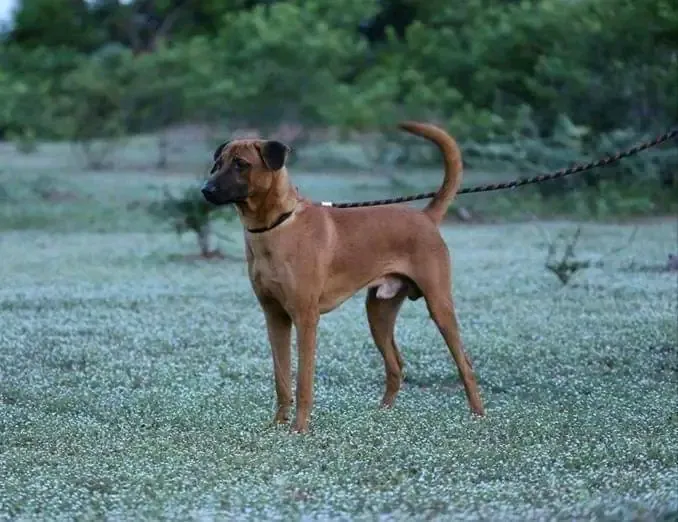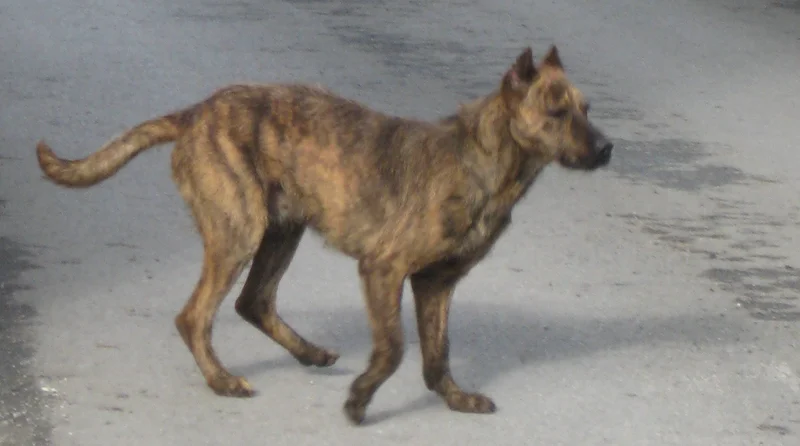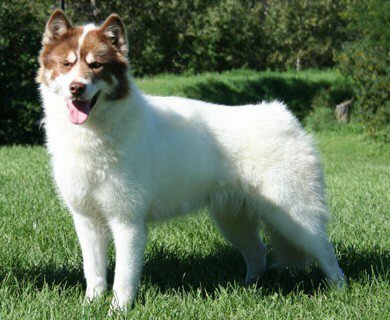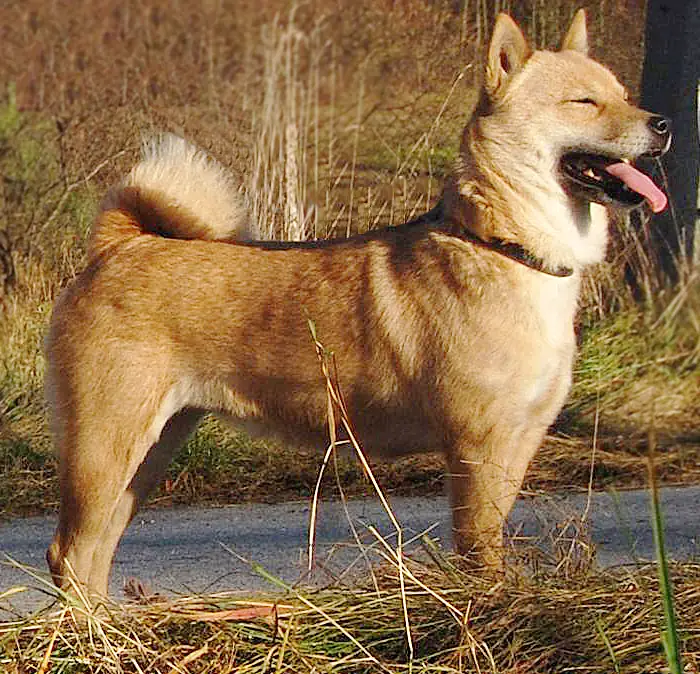Argentine Polar Dog
The Argentine Polar Dog is a strong and energetic breed known for its endurance and loyalty. Ideal for active families, they thrive on exercise and training.
Overview
🐕Breed Overview
✨Key Traits
💡What Makes Argentine Polar Dog Special
One of the standout traits of the Argentine Polar Dog is its remarkable endurance and strength, which makes it an excellent companion for active individuals and families. They have a strong work ethic and thrive when given tasks to complete, whether it's pulling sleds or participating in dog sports.
Their intelligence allows them to learn quickly, and they enjoy mental challenges that keep them engaged. Additionally, their protective nature makes them reliable guardians for their families, while their playful demeanor ensures they remain fun and engaging companions.
These key traits make the Argentine Polar Dog a versatile breed that can adapt to various lifestyles, provided their exercise and socialization needs are met.
The Argentine Polar Dog is a remarkable breed known for its strength, endurance, and adaptability to harsh climates. Originating in Argentina, this breed was developed in the early 20th century for polar expeditions, showcasing its resilience and capability as a working dog. With a robust build and a thick double coat, the Argentine Polar Dog is well-equipped to handle extreme cold, making it an ideal companion for outdoor enthusiasts and adventurers.
In terms of personality, the Argentine Polar Dog is intelligent, loyal, and energetic. They thrive on physical activity and require at least 90 minutes of exercise daily to keep them happy and healthy. Their playful nature makes them excellent companions for families, and they are known to be good with children when properly socialized.
However, they can exhibit behavioral challenges if not adequately exercised, leading to boredom-related issues. Training an Argentine Polar Dog requires consistency and positive reinforcement. They respond well to rewards and enjoy engaging in activities that challenge their minds.
Socialization is crucial from a young age to ensure they develop good manners and reduce any territorial tendencies. Living with an Argentine Polar Dog means embracing an active lifestyle. They excel in various activities, including running, hiking, and participating in dog sports.
Their adaptability allows them to thrive in both rural and urban settings, provided their exercise needs are met. Owners should be prepared to invest time in training and socialization to ensure a well-rounded companion. Overall, the Argentine Polar Dog is a unique breed that combines strength, intelligence, and loyalty, making them a wonderful addition to active families and individuals who appreciate the outdoors.
With proper care, training, and exercise, they can be a loving and devoted companion for many years.
🎉Fun Facts
Argentine Polar Dogs are known for their strong bond with their families and often act as protective companions.
The Argentine Polar Dog was originally bred for polar expeditions and is known for its endurance in extreme conditions.
They have a thick double coat that helps them withstand cold temperatures, making them ideal for outdoor activities in winter.
This breed is highly trainable and excels in various dog sports, including agility and obedience competitions.
Breed Characteristics
Family & Friends
Good Behavior
Get Up & Go
Household Harmony
Temperament & Personality
✨Key Traits
🐕Core Temperament
The Argentine Polar Dog exhibits a friendly and energetic temperament, characterized by loyalty and playfulness. They are known for their protective instincts, making them excellent family companions.
This breed is generally good with children and can coexist well with other pets when properly socialized. Their intelligence and eagerness to please make them highly trainable, though they require consistent training and mental stimulation to prevent boredom.
While they may be reserved with strangers, they are affectionate with their families and thrive on companionship. Overall, their temperament makes them well-suited for active families who can provide the exercise and attention they need.
💫Personality Profile
The Argentine Polar Dog is known for its energetic and playful personality. They are highly intelligent and eager to please, making them relatively easy to train with consistent, positive reinforcement methods.
This breed thrives on physical activity and enjoys engaging in various games and exercises. They are loyal companions who form strong bonds with their families, often displaying protective instincts towards their loved ones.
While they can be reserved with strangers, proper socialization helps them become well-rounded dogs. Their playful nature makes them great companions for children, and they often enjoy interactive playtime with their families.
🔊Vocal Tendencies
The Argentine Polar Dog has a moderate noise level, with a tendency to bark when alerting to strangers or during play. They may also vocalize when excited or seeking attention.
While they are not excessive barkers, their protective instincts can lead them to be more vocal in unfamiliar situations. Proper training and socialization can help manage their barking tendencies, ensuring they are well-mannered companions.
Overall, their vocalizations are typically context-driven, and they communicate effectively with their families.
Affection & Social Traits
Energy & Activity
Communication Style
Care Requirements
🏃♂️Exercise Requirements
Daily Exercise
The Argentine Polar Dog, known for its high energy levels and endurance, requires a significant amount of daily exercise to maintain its physical and mental well-being. Ideally, this breed should engage in at least 90 minutes of exercise each day, which can be broken down into multiple sessions. Activities such as brisk walks, running, and playing fetch are excellent for this breed, as they enjoy both physical exertion and mental challenges.
Additionally, engaging in dog sports like agility or obedience training can provide the necessary stimulation. Puppies should have shorter, more frequent play sessions to avoid overexertion, while adult dogs thrive on longer, more intense workouts. Regular exercise helps prevent behavioral issues such as boredom and anxiety, which can lead to destructive behaviors.
Insufficient exercise can result in weight gain, increased energy levels that may manifest as hyperactivity, and potential health problems such as joint issues or cardiovascular concerns.
Preferred Activities
🏠Living & Adaptability
Space Requirements
The Argentine Polar Dog thrives in environments that offer ample space for exercise and play. Ideally, they should have access to a large, securely fenced yard where they can run freely.
While they can adapt to apartment living if provided with sufficient daily exercise, they may become restless and exhibit destructive behaviors if confined to small spaces for extended periods. Owners in urban settings should ensure that they can commit to regular outdoor activities, such as long walks or trips to dog parks, to meet the breed's exercise needs.
Additionally, this breed enjoys outdoor adventures and is well-suited for rural living, where they can explore and engage in more natural activities.
Climate Preference
🍲Feeding Guide
Schedule
Food Types
Portion Size
Special Nutritional Needs
The Argentine Polar Dog may require a diet rich in protein and healthy fats to support its high energy levels and active lifestyle. Owners should look for high-quality dog food that meets the nutritional standards for large breeds.
Additionally, monitoring for food sensitivities is essential, as some dogs may have allergies to certain ingredients. Supplements, such as omega fatty acids, can be beneficial for coat health and joint support, especially in older dogs.
✨Grooming Requirements
Grooming Overview
The Argentine Polar Dog has a thick double coat that requires regular grooming to keep it healthy and free from matting. Owners should brush their dog's coat at least once a week, using a slicker brush or undercoat rake to remove loose hair and prevent tangles.
During shedding seasons, which typically occur in spring and fall, more frequent brushing (2-3 times a week) may be necessary to manage the increased hair loss. Bathing should be done as needed, usually every 2-3 months, or when the dog becomes particularly dirty.
Regular nail trimming, ear cleaning, and dental care are also essential components of the grooming routine to maintain overall health.
Care Schedule
Brush weekly; more frequently during shedding seasons; bathe every 2-3 months; trim nails every 2-4 weeks.
Health Profile
⚕️Health Care
Regular health care is crucial for the Argentine Polar Dog's lifespan. Routine veterinary check-ups, vaccinations, and preventive treatments can help detect health issues early and ensure the dog remains healthy throughout its life.
Owners should also be proactive in monitoring their dog's health, including weight management, dental care, and joint health, especially as the dog ages. Establishing a consistent health care routine can significantly impact the dog's overall well-being and longevity.
Health Issues Overview
⏳Average Lifespan
Genetic Factors
Genetics play a significant role in the Argentine Polar Dog's lifespan, with hereditary health issues being a concern. Responsible breeding practices that prioritize genetic diversity can help reduce the prevalence of inherited conditions.
Potential owners should seek reputable breeders who conduct health testing on their breeding stock to minimize the risk of genetic disorders. Understanding the breed's genetic background can help owners make informed decisions about their dog's health and care.
Living Conditions
The Argentine Polar Dog's lifespan can be influenced by various environmental factors, including housing conditions, climate, and social interactions. Dogs living in environments that provide ample space for exercise and play tend to live longer, healthier lives.
Exposure to extreme temperatures, whether too hot or too cold, can negatively impact their health. Additionally, social interactions with humans and other pets can contribute to their overall well-being, reducing stress and anxiety.
Owners should ensure that their dogs have a safe and stimulating environment, with opportunities for regular exercise and socialization to promote longevity.
🏥Common Health Issues
Hip Dysplasia
Warning Signs
🔬Diagnosis
Veterinarians typically diagnose hip dysplasia through physical examinations and X-rays.
💊Treatment
Treatment options may include weight management, physical therapy, or surgery in severe cases.
📝Management Tips
Maintain a healthy weight, provide joint supplements, and engage in low-impact exercises to support joint health.
Progressive Retinal Atrophy (PRA)
Warning Signs
🔬Diagnosis
Diagnosis is usually made through veterinary eye examinations and genetic testing.
💊Treatment
Currently, there is no cure, but supportive care can help improve quality of life.
📝Management Tips
Regular veterinary check-ups and monitoring for vision changes can help manage this condition.
Hypothyroidism
Warning Signs
🔬Diagnosis
Diagnosis is made through blood tests measuring thyroid hormone levels.
💊Treatment
Lifelong medication is typically required to regulate hormone levels.
📝Management Tips
Regular monitoring and medication can help manage this condition effectively.
🛡️Preventive Care
🔬Hip Evaluation
Hip Evaluation assesses the dog's hip joints for dysplasia and other abnormalities, which can lead to joint issues later in life.
📅 Annually after 2 years of age.
🔬Thyroid Function Test
Thyroid function tests measure hormone levels to identify hypothyroidism, a common condition in this breed.
📅 Every 1-2 years, or as recommended by a veterinarian.
🔬Ophthalmic Examination
Eye examinations check for hereditary eye conditions, including Progressive Retinal Atrophy (PRA).
📅 Every 1-2 years, or as recommended by a veterinarian.
Training
🧠Intelligence & Trainability
💪Work Drive
The Argentine Polar Dog has a strong work drive, stemming from its history as a working dog. This breed thrives when given tasks or jobs to do, whether it's pulling sleds, participating in dog sports, or engaging in interactive play.
Mental stimulation is just as important as physical exercise for this breed, as it helps prevent boredom and associated behavioral issues. Owners should provide a variety of activities that challenge their intelligence and keep them engaged, such as scent work, agility courses, or obedience training.
Failing to meet their work drive can lead to restlessness and frustration, so it's essential to find ways to keep them mentally and physically active.
⚠️Training Considerations
The Argentine Polar Dog can exhibit behavioral challenges, particularly if not adequately exercised or mentally stimulated. Common issues include excessive barking, digging, and destructive chewing. These behaviors often stem from boredom or pent-up energy.
To mitigate these challenges, owners should establish a consistent training routine that incorporates both physical and mental exercises. Socialization from a young age is crucial to help the breed develop good manners and reduce any tendencies toward aggression or territorial behavior. Positive reinforcement training methods work best with this breed, as they respond well to rewards and praise.
Engaging in activities that challenge their intelligence, such as puzzle toys or obedience training, can also help alleviate behavioral issues.
📝Training Tips
Training the Argentine Polar Dog requires patience, consistency, and a firm yet gentle approach. Start with basic obedience commands, such as sit, stay, and come, using positive reinforcement techniques to encourage desired behaviors.
Incorporate regular training sessions into their daily routine, ensuring they remain engaged and motivated. Socialization is essential, so expose them to various environments, people, and other animals from a young age.
Consider enrolling in obedience classes or working with a professional trainer to address any specific challenges. Additionally, incorporating fun activities, such as agility training or interactive games, can enhance their learning experience and strengthen the bond between owner and dog.
History & Heritage
📜Origin Story
The Argentine Polar Dog's origin can be traced back to the early 20th century when explorers and settlers in Argentina sought a reliable working dog for polar expeditions. The harsh conditions of the Patagonian region necessitated a breed that could endure extreme cold and perform various tasks, such as pulling sleds and assisting in hunting.
Breeders began crossing existing breeds known for their strength and endurance, leading to the establishment of the Argentine Polar Dog. This breed quickly gained popularity among explorers and outdoor enthusiasts, becoming synonymous with adventure and resilience.
Its development was influenced by the need for a dependable companion in challenging environments, and it has since become a beloved breed in Argentina and beyond.
⏳Development History
The Argentine Polar Dog was developed in the early 1900s, primarily by crossing various breeds, including the Siberian Husky and the Alaskan Malamute, to create a dog capable of withstanding extreme cold and performing demanding tasks. Initially bred for polar expeditions, the breed was selected for its strength, endurance, and ability to work in teams.
Over the years, the breed has evolved, with breeders focusing on enhancing its physical attributes, such as size and coat density, while also emphasizing its temperament to ensure it remains a loyal and trainable companion. The breed has maintained its working dog status, often used in search and rescue operations, as well as in competitive dog sports.
🛡️Purpose & Historical Role
Historically, the Argentine Polar Dog was bred for polar expeditions, serving as a sled dog and hunting companion. Its primary role was to assist explorers in navigating harsh terrains and extreme weather conditions, showcasing its strength and endurance.
Over time, the breed has adapted to various roles, including search and rescue operations, where its keen sense of smell and loyalty make it an invaluable asset. In modern times, the Argentine Polar Dog is also recognized for its capabilities in dog sports, such as agility and obedience competitions, further highlighting its versatility and intelligence.
🏺Cultural Significance
The Argentine Polar Dog has historical significance in Argentina, particularly in the context of polar exploration and as a working dog for sledding and hunting in cold climates. Developed in the early 20th century, this breed was specifically bred to assist in polar expeditions, showcasing its resilience and adaptability to harsh environments.
The breed has become a symbol of strength and endurance, often associated with the rugged landscapes of Patagonia. In popular culture, the Argentine Polar Dog has been featured in various documentaries and media that highlight its role in exploration and its unique characteristics, contributing to its recognition as a national treasure in Argentina.
Conservation Status
This breed is less common but has stable populations in certain regions.









